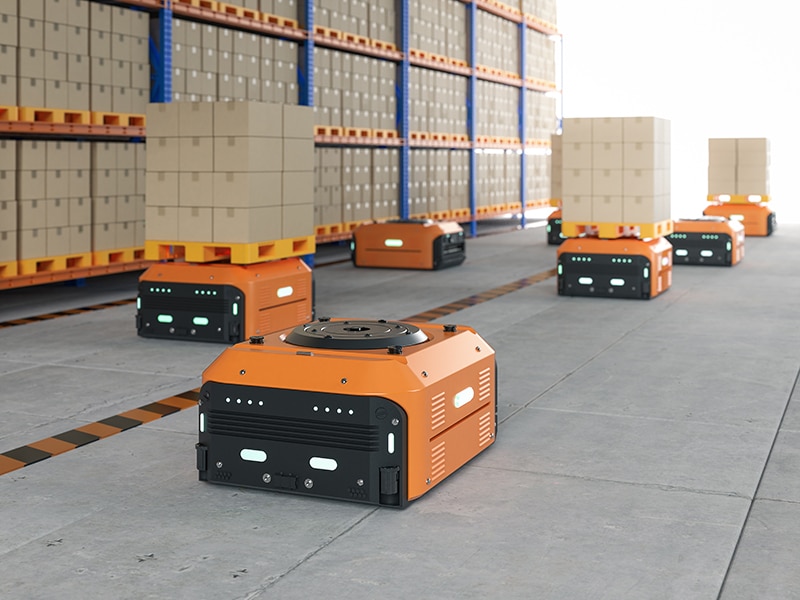Many industries are leveraging robotic process automation with the support of business process outsourcing companies to boost organizational performance and accelerate their digital transformation journey. Today, there is a growing demand for automation in the logistics business to handle complex processes efficiently. Paper-based shipping documentation that relies on manual data entry, for instance, is error prone, time-consuming, tedious and expensive. Automating the bill of lading, which is the crux of key shipment processes, can reduce delays, cut expenses, and streamline logistics operations.
Mckinsey notes that adopting an electronic bill of lading could result in direct cost savings for all stakeholders, amounting to $6.5 billion a year. Their analysis found that carriers could reap up to $2.1 billion in benefits such as more direct interaction with shippers, and streamlined and digitalized workloads, leading to cost savings.
Challenges of Paper-based Trade Documentation
A bill of lading is issued by carriers to acknowledge receipt of cargo from the shipper. This important trade document states what the shipment is, its source, and where it is headed. According to Mckinsey, the bill of lading process still relies on the physical transfer of paper records and applies to roughly 40 percent of all container-based trade transactions. McKinsey analysis reveals that the bill of lading accounts for between 10 and 30 percent of total trade documentation costs.
The bill of lading should include the following information:
- Shipment ID or Reference Numbers
- Shipper and receiver names and addresses
- Freight Information such as date of shipment, total number of items, details, weight of shipment, dimensions of shipment, freight class, shipping and handling instructions, etc.
- Declared value of the shipment, including details of insurance and settlement/compensation claims in case of failure of delivery
- Complete description of the item being shipped, with specifics about the common name and the material used to manufacture it.
- Dated signatures of all parties involved in the shipping process
In addition to these essential details, the bill of lading for export operations should contain the specific information that may be required by each vendor, purchaser, shipping agency and government.
Manually entering all these details about the shipment in into lengthy spreadsheets can be complex. Manual data entry and paper bills of lading come with direct, indirect and hidden costs:
- Data entry errors, including missing information and duplication. Human error means that 12.5% of invoices processed manually require some sort of rework (www.shipamax.com).
- Slow turnaround time leading to shipment delays – manual processes result in incomplete and unreliable data, making it difficult to scale logistics operations. For instance, a typo in the pickup number can cause a major delay in shipment pickup.
- Costly, based on the number of documents to process and their complexity.
Errors in manual data entry can also lead to late payment fees, cash flow issues, poor vendor relationships, and business growth challenges.
Benefits of Bill of Lading Automation
Automating the bill of lading reduces errors and waste, lowers costs, saves time, and improves productivity and efficiency in trade. It can also drive supply-chain resilience and help reduce potential future disruptions.
Today, bill of lading data entry is undergoing a transformation with the application of advanced technologies like analytics, intelligent automation, machine learning and artificial intelligence:
- Software automatically generates and stores the bill of lading with all the necessary information.
- The content of the bill of lading is sent to other systems such as the company’s accounting software, custom declaration workflow, shipment tracking system, or customer notification platform.
- Members of the transportation team can log in, access and download the bill of lading from anywhere.
- The shipment information can be updated in real-time by users, reducing delays at pickup and delivery.
The benefits of digital bill of lading are as follows:
- Accurate processing: End-to-end automation via artificial intelligence and machine learning will ensure that structured and unstructured formats such as PDFs, images and handwritten forms are quickly converted into accurate, machine-readable format.
- Reduces delays and saves time: Automation allows you to generate bill of lading and copy it into other systems quickly. Accuracy in paperwork processing will reduce delays and mitigate backlogs. The digital document can be instantly shared with shippers, carriers and receivers, as well as brokers.
- Cost-effective and environment friendly: Digitizing bill of lading reduces paper use and saves physical storage space. By reducing errors, it minimizes risk of fines, legal issues, and client dissatisfaction.
- Improves compliance: With cutting-edge automation, shipping companies can easily make adjustments when regulatory changes occur. With highly reliable shipment data, they can demonstrate compliance with all relevant laws and regulations.
- Enhanced security: Only the authorized shipper and carrier can get access to the automated bill of lading. A digital bill of lading will enable access only after verifying a signer’s identity.
- Creates digital audit trail: Bill of lading automation allows companies to maintain clear and accurate financial records by ensuring visibility into the e-signature process and updates or alterations at every step.
Recent events like the COVID-19 pandemic and its economic impact highlight the importance of supply-chain resilience for businesses across the world. Information sharing, collaboration, and greater visibility are essential to build resistance to supply disruptions. Bill of lading automation prevents errors, speeds up the documentation process, and reduces costs in shipment processes, and improves customer journeys.
Eliminate Paper-based Processes with Smart Business Process Outsourcing Solutions
Today, smart back office outsourcing providers are leveraging robotic process automation (RPA), artificial intelligence and machine learning, data analytics to automate and streamline their operations. Partnering with an expert can help the transportation industry implement bill of lading automation and take their logistics operations to the next level.




